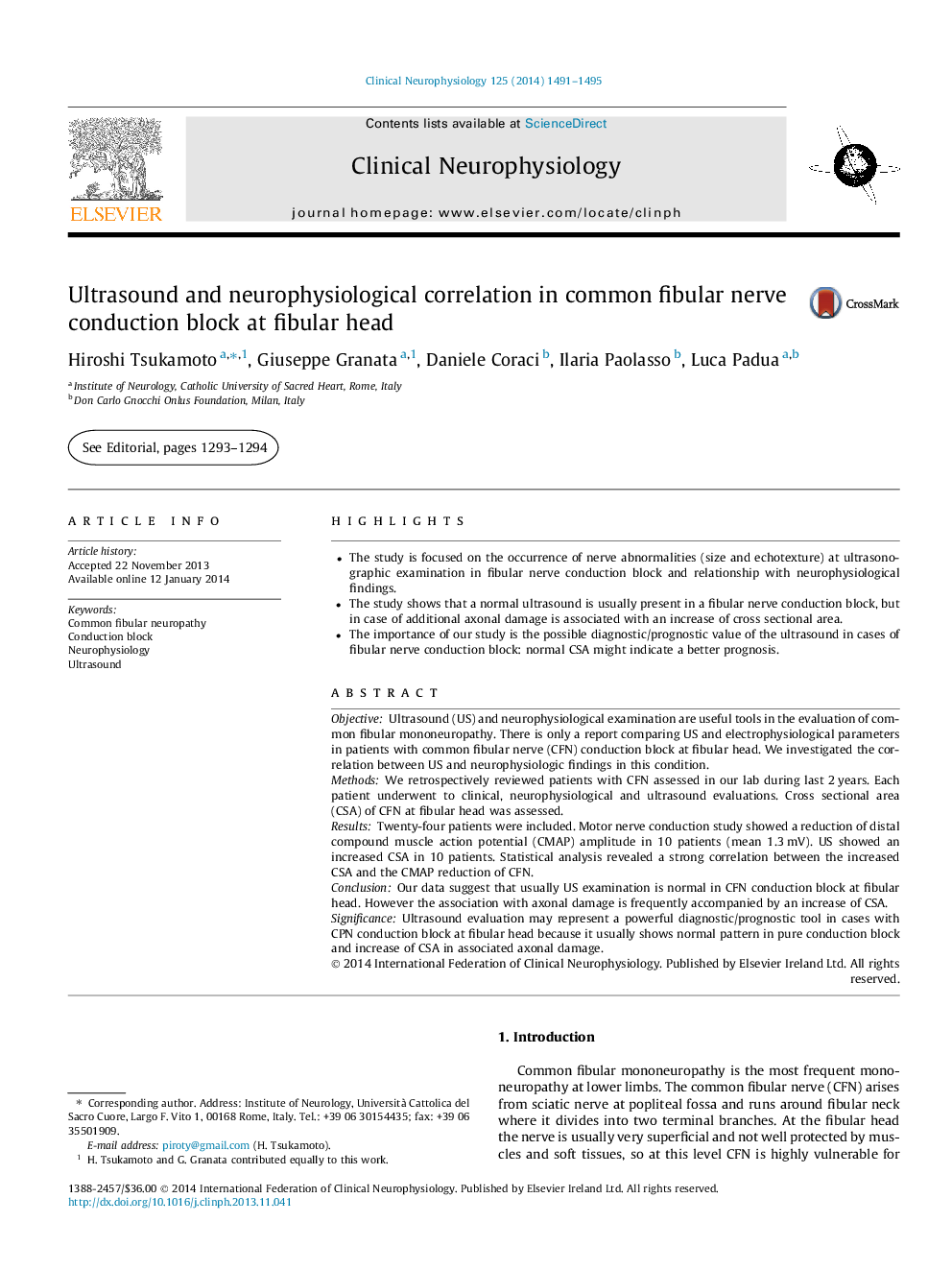| Article ID | Journal | Published Year | Pages | File Type |
|---|---|---|---|---|
| 3043922 | Clinical Neurophysiology | 2014 | 5 Pages |
•The study is focused on the occurrence of nerve abnormalities (size and echotexture) at ultrasonographic examination in fibular nerve conduction block and relationship with neurophysiological findings.•The study shows that a normal ultrasound is usually present in a fibular nerve conduction block, but in case of additional axonal damage is associated with an increase of cross sectional area.•The importance of our study is the possible diagnostic/prognostic value of the ultrasound in cases of fibular nerve conduction block: normal CSA might indicate a better prognosis.
ObjectiveUltrasound (US) and neurophysiological examination are useful tools in the evaluation of common fibular mononeuropathy. There is only a report comparing US and electrophysiological parameters in patients with common fibular nerve (CFN) conduction block at fibular head. We investigated the correlation between US and neurophysiologic findings in this condition.MethodsWe retrospectively reviewed patients with CFN assessed in our lab during last 2 years. Each patient underwent to clinical, neurophysiological and ultrasound evaluations. Cross sectional area (CSA) of CFN at fibular head was assessed.ResultsTwenty-four patients were included. Motor nerve conduction study showed a reduction of distal compound muscle action potential (CMAP) amplitude in 10 patients (mean 1.3 mV). US showed an increased CSA in 10 patients. Statistical analysis revealed a strong correlation between the increased CSA and the CMAP reduction of CFN.ConclusionOur data suggest that usually US examination is normal in CFN conduction block at fibular head. However the association with axonal damage is frequently accompanied by an increase of CSA.SignificanceUltrasound evaluation may represent a powerful diagnostic/prognostic tool in cases with CPN conduction block at fibular head because it usually shows normal pattern in pure conduction block and increase of CSA in associated axonal damage.
